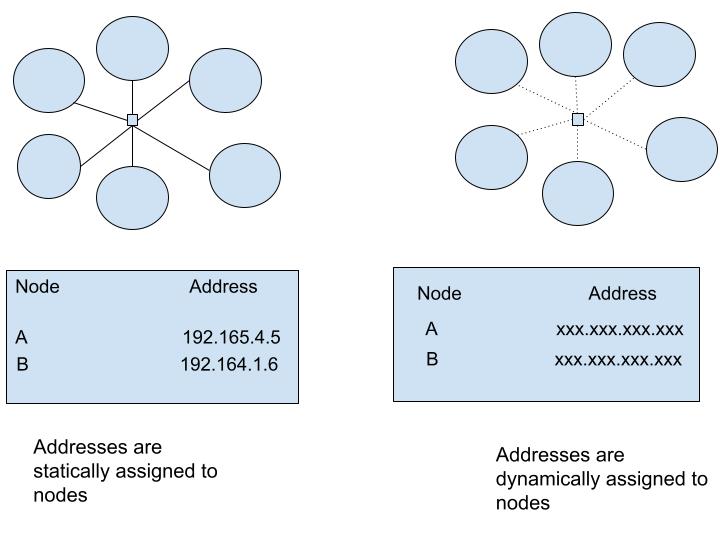Yes, we're now running our Black Friday Sale. All Access and Pro are 33% off until 2nd December, 2025:
What Are the Differences Between Static and Dynamic Routing?
Last updated: May 4, 2023
1. Overview
Data moves along any network in the form of data packets. If this movement is not directed and controlled suitably, network failure may occur due to data traffic causing congestion within a network. This is where routing comes in, creating efficiency in network communication by providing a way to manage data packet movement.
There are two different types of routing: static and dynamic. In this tutorial, we’ll see the differences between these two.
2. What Is Routing?
Routing is the process of creating a route for data packets. This means selecting a path along which data will be transferred from source to destination. Computer networks consist of two major components:
- Nodes: these are the machines being used within the network
- Paths or links: these connect nodes to each other
Two nodes in an interconnected network can communicate through many different paths. Routing comes into the picture because we’d like to have the most optimal path used for communication.
3. Types of Routing
As mentioned earlier, there are two types of routing: static and dynamic routing. These two types of routing are based on how a router creates its routing tables. A router is a networking device that connects computing devices and networks to other networks. A routing table is a data table stored in a router that lists routes to particular network destinations:

3.1. What Is Static Routing?
This is where network administrators manually add routes to the routing table. A network administrator can also select network routes. It is useful in situations where the design of a network or its parameters are expected to remain the same.
3.2. What Is Dynamic Routing?
Here, the routing tables are created and updated by routers at runtime based on existing network conditions. Automatic adjustments are made to create another route to reach the network destination if one route goes down.
4. Differences Between Static and Dynamic Routing
Let’s look at different areas we can use to compare these two types of routing.
4.1. Routing Protocol
This is a set of rules that specifies how routers communicate with each other to distribute information that enables them to select routes between nodes on a computer network. These network protocols help computers communicate effectively and efficiently as optimal routing decisions are made.
In static routing, we don’t use any protocol. However, dynamic routing uses distance vector protocols such as RIP and IGRP, and link state protocols such as OSPF and IS-IS to adjust routes.
4.2. Routing Table Entries
Let’s consider a scenario where a failure occurs within a router and it’s unable to transfer data packets. This situation is handled differently by the two types of routing:
- In static routing, such a scenario would require the network administrator to manually configure the route and make an entry to the table.
- In dynamic routing, the router will use a protocol that was assigned by the network administrator. This protocol will automatically decide the best alternate route for the data packets and then make an entry to the routing table.
4.3. Network Size
Static routing is suitable for a small network with fewer routers and optimal for networks whose network architecture is unchanging. This is because the manual configurations of networks are only easier when the network is small. So as the network size grows, so does the complexity.
On the other hand, dynamic routing is suitable for a large network. It creates more possible routes to send packets across the network thus preferable to static routes which would be cumbersome to maintain and frequently reconfigure.
4.4. Link Failure
A network can experience link failure when the connection or path between two nodes is unusable due to different reasons.
When a failure occurs in a network that uses static routing, this failure affects the whole network.
When a failure occurs in a network that uses dynamic routing, the failure does not affect the whole network. This is because the routing protocols are able to select alternate routes automatically unlike static routing.
4.5. Security
In static routing, security is high. This is because it doesn’t share routes across the entire network.
Security is less in dynamic routing. This is because it shares complete routing tables across the network, hence reducing security.
4.6. Changes in Routes
In static routing, the route does not change automatically. An alternate route has to be configured by the network administrator. When using dynamic routing, the route changes automatically according to the changes in the network.
5. Conclusion
This article has given an overview of routing, its types, and its differences. It has also shown the various scenarios where we can apply static and dynamic routing.